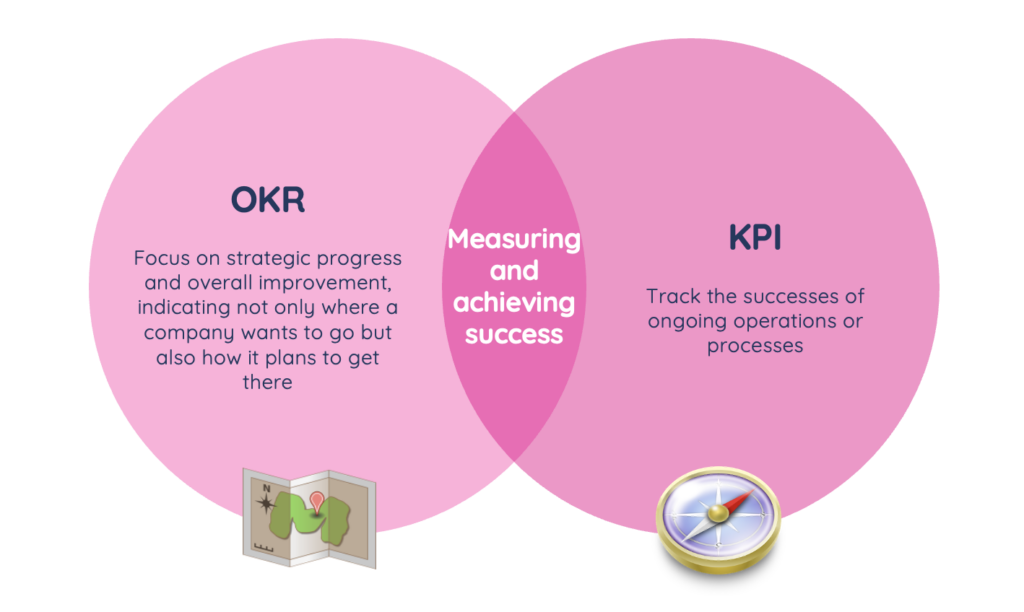Image created using ChatGPT
In today’s dynamic business environment, the art of measuring success and progress is increasingly important. While Key Performance Indicators (KPIs) have been crucial in tracking operational success, the addition of Objectives and Key Results (OKRs) offers a refreshing and dynamic approach to realizing broader strategic ambitions. In this article, we delve into the synergistic power of OKRs and KPIs in steering organizations towards success.
The Synergy of OKRs and KPIs
KPIs have traditionally been the go-to metrics for gauging the health and performance of an organization. However, in isolation, they offer a myopic view of success, focusing on daily operations without necessarily advancing strategic goals. This is where OKRs come into play. By connecting an organization’s vision and strategy to execution, OKRs ensure that everyone understands what is expected of them, what success looks like, and how their work contributes to the larger goals of the organization.

The Origins of OKRs
Originating in the 1990s and popularized by venture capitalist John Doerr, OKRs stand for Objectives and Key Results. This goal-setting framework ties an organization’s vision and strategy directly to execution, ensuring clarity, focus, and alignment across all levels.
It is a tool that has scaled Silicon Valley companies like Google from small teams to global powerhouses with tens of thousands of employees.
OKRs aren’t just for tech giants; they’ve proven their worth across various sectors, from retail giants like Walmart and Target to media outlets like The Guardian and financial institutions like ING Bank. OKRs have the versatility to support diverse goals throughout a wide range of organizations, whether they belong to non-profits, educational entities, or even individuals in sports and investing.
The Distinctive Difference
Imagine navigating a ship: OKRs are your nautical charts, guiding you through the waves toward your chosen destination. They are the temporary waypoints you strive to reach, adapting and setting new courses as you journey forward. KPIs, on the other hand, are your navigational instruments—your compass, wind gauge, and knot meter—constantly monitored to maintain the course and ensure optimal sailing conditions.
In short, OKRs focus on strategic progress and overall improvement, indicating not only where a company wants to go but also how it plans to get there.
KPIs track the success of ongoing operations or processes. In combination, OKRs and KPIs allow organizations to measure and achieve success.

Image generated with ChatGPT
OKRs consist of three main components:
1. Objectives: The ambitious goals you set to achieve.
2. Key Results: The measurable outcomes that indicate progress toward these objectives.
3. Actions: The specific steps you’ll take to reach the key results.
These components are the building blocks of OKRs, and they can be applied at any level, from company-wide initiatives to team projects, as long as they align with broader goals and KPIs.
When creating your OKRs, ensure they are:
- Quantifiable: They turn abstract visions into measurable achievements.
- Dynamic: They evolve with your business, allowing you to adapt and change course as needed.
- Verifiable: Their success or failure is not a matter of interpretation but of clear evidence.
- Behavioral: They encourage and incorporate behavioral changes to reach objectives.
✅ "Good" OKR
Objective: Increase overall customer satisfaction for our online store.
Key results:
- Achieve a customer satisfaction score of 90% or higher on post-purchase surveys.
- Reduce average customer support response time to under 2 hours.
- Increase repeat customer rate to 40%.
This OKR is quantifiable as it has specific metrics (customer satisfaction score, average customer support response time and repeat customer rate) that can be measured. Moreover, it is dynamic as it can be altered as the business evolves; if customer expectations shift, the target satisfaction score can be adapted. This OKR is also verifiable as its success is based on clear and measurable evidence (survey scores, response time…). Finally, it is also behavioral as it encourages changes in behavior, such as improving customer service responsiveness and quality.
❌ "Bad" OKR
Objective: Be the best online store
Key results:
- Get positive feedback from customers
- Have a good social media presence
- Be liked by employees
This OKR is not quantifiable as it lacks specific and measurable key results. The terms “positive feedback” and “good social media presence” are too vague. Additionally, the OKR is not dynamic as it does not explain how it will evolve alongside the business. As the objective set is subjective and does not provide clear metrics for measuring success, this OKR is not easily verifiable. Finally, the OKR does not focus on behavioral change or specific actions required to achieve the objective.

Why should organizations adopt OKRs?
- Alignment: Ensuring that the goals, efforts, and strategies of different individuals, teams, or departments within an organization are coordinated and directed towards achieving the overarching objectives of the company.
- Focus: Channelling efforts towards what truly matters.
- Accountability: Making it clear who is responsible for what.
- Adaptability: Allowing your organization to respond swiftly to change.
What happens if organizations fail to adopt OKRs?
In organizations that do not adopt OKRs or similar frameworks, a pervasive lack of clear direction often emerges, creating confusion among employees about priorities and expectations. This absence frequently leads to misaligned efforts across teams and departments, with each pursuing goals that may not synergize with the organization’s overall strategy.
This dual approach of KPIs and OKRs enables organizations to not only measure performance but also drive forward-thinking strategies and innovative outcomes.
Consequently, there is often an inefficient allocation of resources, with time and funds expended on non-strategic initiatives. The absence of a structured system like OKRs also hampers the organization’s ability to effectively track progress, making it challenging to gauge success and identify areas needing improvement. Decision-making processes tend to become less data-driven and strategic, often relying more on subjective judgment. Furthermore, organizations lacking a robust goal-setting framework like OKRs find it difficult to swiftly adapt to market changes, technological advancements, or shifts in customer preferences.
Therefore, consider adding OKRs to your existing KPIs...
Traditionally, Key Performance Indicators were the primary metrics used to evaluate an organization’s success. These indicators, often quantifiable, provided insights into how effectively a company was achieving key business objectives. However, the modern business landscape has evolved, recognizing that KPIs alone are not sufficient for holistic organizational assessment. This has led to the integration of Objectives and Key Results (OKRs) alongside KPIs. OKRs offer a more dynamic approach, focusing on setting ambitious goals and tracking measurable outcomes, which complement KPIs by linking them to broader strategic objectives. This dual approach of KPIs and OKRs enables organizations to not only measure performance but also drive forward-thinking strategies and innovative outcomes.
Curious to learn more about OKRs?
At TVD, we believe in the WIN methodology—What Is Needed. We are agnostic about the tools and frameworks we use, as long as they serve our purpose. OKRs, combined with KPIs, can be a viable strategy to navigate the complex business environment effectively.
For those keen to delve deeper into how OKRs can revolutionize your business strategy execution and complement your existing KPIs, TVD offers insights and expertise. We are here to guide you through integrating these frameworks into your business operations for better alignment, sharper focus, and organizational success.
Are you ready to set sail towards your company’s success with OKRs and KPIs? Reach out to learn more about how TVD can steer your organization towards its goals.

Paul Blidaru
Always striving to make a positive impact.



